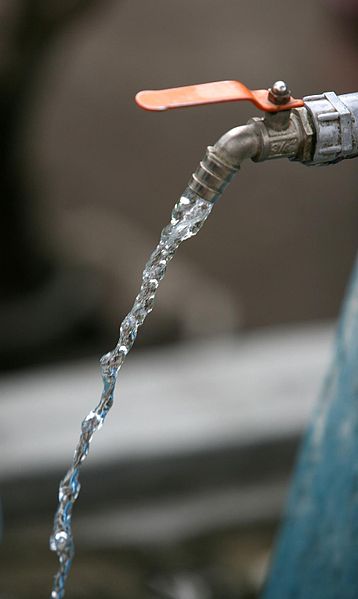Water purification is the process of removing undesirable chemicals, biological contaminants, suspended solids, and gases from water. The goal is to produce water that is fit for specific purposes. Most water is purified and disinfected for human consumption, but water purification may also be carried out for a variety of other purposes, including medical, pharmacological, chemical, and industrial applications. The history of water purification includes a wide variety of methods. The methods used include physical processes such as filtration, sedimentation, and distillation; biological processes such as slow sand filters or biologically active carbon; chemical processes such as flocculation and chlorination; and the use of electromagnetic radiation such as ultraviolet light.
Station for complex water treatment SKO-10K
Cutaway view of a typical rapid sand filter
Slow "artificial" filtration (a variation of bank filtration) into the ground at the Water purification plant Káraný, Czech Republic
A profile of layers of gravel, sand and fine sand used in a slow sand filter plant.
Drinking water or potable water is water that is safe for ingestion, either when drunk directly in liquid form or consumed indirectly through food preparation. It is often supplied through taps, in that case, it is also called tap water. Typically in developed countries, tap water meets drinking water quality standards, even though only a small proportion is actually consumed or used in food preparation. Other typical uses for tap water include washing, toilets, and irrigation. Greywater may also be used for toilets or irrigation. Its use for irrigation however may be associated with risks.
Drinking water that is supplied through a tap (tap water).
Drinking water vending machines in Thailand. One litre of potable water is sold (into the customer's own bottle) for 1 baht.
Example for physical and chemical parameters measured in drinking water samples in Kenya and Ethiopia as part of a systematic review of published literature.
The "F-diagram" (feces, fingers, flies, fields, fluids, food), showing pathways of fecal–oral disease transmission. The vertical blue lines show barriers: toilets, safe water, hygiene and handwashing.








